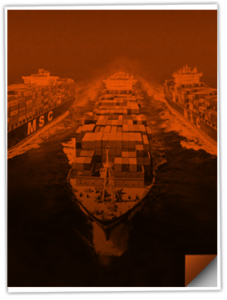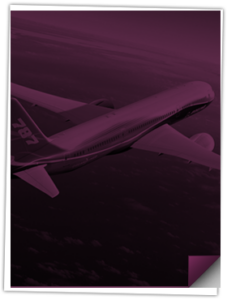Featured Headlines:
India Preempts Possible Tariffs
OFAC…There's Another Video Series!?
Tariff Tango: The Art of the (Temporary) Deal
Trucking Turmoil: Tariffs, Tensions and Heightened Price Tags
LTL Freight's Classification Overhaul
Slipping on a Panama Banana?
- Last week, Panamanian President José Raúl Mulino firmly denied claims by the Trump administration that US government vessels would be exempt from Panama Canal tolls, calling the statement “intolerable” and false.
- Before Panama’s response, the US had boasted on social media that Panama agreed to waive many fees, resulting in “millions” of savings annually. The problem? The independent Panama Canal Authority (PCA) quickly shut that down, confirming no toll changes have been made.
- The former and current US President, the one not named Grover Cleveland who also served nonconsecutive terms, has long eyed the Panama Canal as a US asset, even suggesting taking it back.
- Based on the extreme focus on “Chinese” ownership of port terminals at both ends of the canal, by Hutchison Ports PPC, much of the canal cabal while not banal is almost certainly in the China chorale corral!
- Panama recently pulled out of China’s Belt and Road Initiative, aligning with US interests; however, Hong Kong-based Hutchison still operates key port facilities at the canal’s entrances—leaving Beijing in the picture.
- In a call with US Defense Secretary Pete Hegseth, Mulino reaffirmed Panama’s commitment to cooperate, but insisted tolls are outside his purview.
India Preempts Possible Tariffs
- With US tariff threats looming worldwide, India preemptively slashed import duties on luxury motorcycles, high-end cars, and EV batteries in its latest federal budget—likely aimed to please Harley-Davidson and Tesla (and other impoverished American souls).
- Import duties on motorcycles have dropped by 5-10%; and tariffs on cars over $40,000 fell from 125% to 70%, a significant nod to American automakers.
- Customs duties on lithium-ion EV batteries were eliminated, a clear incentive for Tesla, though Elon Musk has yet to commit on Indian investment plans.
- With 18% of Indian exports headed to the US, New Delhi is keen to avoid conflict, especially as supply chain diversification makes India an increasingly attractive trade partner…you know NOT another five-letter country that starts with a CH!
- Indian Prime Minister Narendra Modi plans to visit the US this week, with further trade negotiations on the table. For now, we expect more economic maneuvering as both sides push their interests.
CTPAT Yourself on the Back!
- The Customs Trade Partnership Against Terrorism (CTPAT) is an incredibly helpful membership and resource for importers and exporters who are interested in ensuring their supply chains meet rigorous US national security standards.
- Do yourself a favor and CTPAT yourself on the back by checking out the latest posts on the website:
- Along with the above resources, there is also a wealth of other basic information on their website that can assist CTPAT members:
- Spoiler Alert: Shapiro is a proud CTPAT member; which provides our customers the added peace of mind when importing in crazy times. Ask us about its benefits today!
OFAC…There's Another Video Series!?
- The Office of Foreign Assets Control (OFAC), which falls under the US Department of Treasury (Treasury), has created a video series to provide users with the fundamentals of the Treasury’s OFAC and the United States’ sanctions implementation process.
- It goes without saying, but all exporters in the trade should be familiar with OFAC and the responsibilities of US business owners.
- Why? Because current regulations, executive orders, and other authorities that govern sanctions administered by OFAC have the power to enforce the law. Which could mean huge problems for you if you are not practicing what they preach!
- You can deep dive into the video series here: Office of Foreign Assets Control | Video Series.
- It’s important to note that these videos are for training purposes only and are subject to change…so keep your wits about you!
Tariff Tango: The Art of the (Temporary) Deal
- In classic deal-making fashion, the US tariffs that were set to hit on February 4th are on hold for 30 days after Canada and Mexico pledged stronger border security measures. Negotiations are currently underway, led by the US Secretary of State, Marco Rubio.
- Canada promised $900M in new enforcement efforts, including fentanyl crackdowns and joint strike forces. Meanwhile, Mexico committed 10,000 soldiers to patrol its border to curb fentanyl and immigration flows.
- In response to a 10% tariff hike on Chinese imports, Beijing retaliated with new tariffs on coal, LNG, crude oil, and machinery from the US, plus export controls on key industrial metals. Interestingly, China also placed its thumb to its nose and said “pfffffffffffftpp!!”
- In an initial notice, USPS said that it would no longer accept parcels from China and Hong Kong after the US imposed an additional 10% tariff on Chinese goods and ended the de minimis exception that allowed small value parcels to enter the country without paying tax.
- However, USPS has reversed course and will not be implementing the ban on all inbound packages from China and Hong Kong as previously announced.
- With de minimis scheduled to be eliminated entirely, it is quite painful to even imagine a courier, parcel, or mail sorting center with international shipments from China. Oh goodie, the I Love Lucy episode from 1952 called “Job Switching”, in which Lucy and Ethel immediately struggle to keep up with candy on a conveyor belt, FINALLY regains relevance!
- China filed a formal challenge against US tariffs—but with the World Trade Organization’s (WTO) bureaucratic process crawling along at a snail’s pace, don’t expect a quick resolution anytime soon!
Trucking Turmoil: Tariffs, Tensions and Heightened Price Tags
- The threat of Trump’s 25% tariffs on Mexico and Canada (plus 10% on Canadian oil and Chinese imports) has trucking leaders gritting their teeth over the potential supply chain chaos, rising costs, and economic fallout that would ensue.
- With trucks moving 85% of US-Mexico trade and 67% of US-Canada trade, trucking groups warn that higher tariffs mean lower freight volumes, which would squeeze an industry just starting to recover from a long freight recession.
- The National Retail Federation (NRF) warned that tariffs won’t fix border security issues. Instead, they’ll jack up prices on everyday goods, leaving consumers footing the bill.
- With $1.57 trillion in USMCA (United States, Mexico and Canada) trade at stake, industry leaders are pushing for better negotiations over larger trade war escalation. But with Trump doubling down on tariffs as leverage, expect a bumpy (and empty?) road ahead.
LTL Freight's Classification Overhaul
- Shippers are eyeing the new National Motor Freight Classification (NMFC) changes suspiciously, wondering if this is a secret freight rate hike in disguise.
- With density-based pricing taking center stage, companies might need to start measuring every pallet like their tailor fitting a custom suit. Wait, who wears a suit anymore besides the obvious?! Are they still in hoodies in Congress or was that banned?!
- The OBVIOUS question on everyone’s mind: Do we need to buy a dimensioner—a type of volume measurement machine that scans three-dimensional items like small parcels, freight on pallets, or crated cargo? Answer: Maybe… if you like paying accurate rates!
- The NMFC was born in 1936, when railroads ruled the land and trucking was the new kid on the block. Now, after 89 years of tweaks, add-ons, and confusion, the system is finally getting a much-needed simplification.
- The NMFC’s 18 freight classes are being streamlined, density scales standardized, and commodity listings condensed.
- Start preparing now…open your docks, let carriers inspect your freight, and triple-check how your shipments are classified. Otherwise, come July 19, you may find out the hard way that your “cost-efficient” freight has been rebranded as a premium luxury item!



